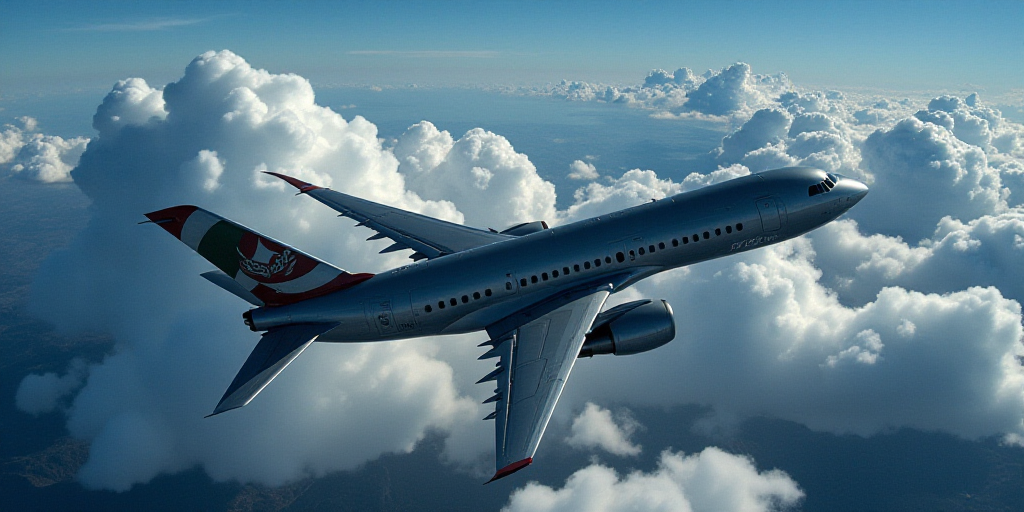Introduction to Mexico’s Aerospace Industry
Mexico’s aerospace industry is rapidly growing, with an annual projected growth rate of 15%. This dynamic manufacturing sector has the potential to become a competitive hub in the global aerospace value chain, with key development focuses in Querétaro, Nuevo León, Chihuahua, and Baja California. These regions already have established clusters with specialized infrastructure and academic linkages.
Key Players and Developments
Oscar Mora Velázquez, CEO of EN-TI, highlighted these developments during Feria Aeroespacial México (Famex) 2025. He emphasized that Mexico is no longer just a manufacturing maquiladora but is now developing satellite technology, critical components for Boeing and Airbus, and positioning itself as a strategic alternative to Asia due to its unique advantages such as competitive costs, trade agreements, and a privileged geographical location.
Mexico’s aerospace industry is expanding in various aspects. Mérida is negotiating with Lufthansa to establish a maintenance base, while Querétaro competes with Guadalajara in manufacturing components. The Universidad Aeronáutica in an unspecified location trains technicians for companies like Bombardier. In Nuevo León, the production of lightweight alloys for aviation is growing at an annual rate of 15%.
Export Performance and Opportunities
Mexico currently exports $11.4 billion annually in aerospace products, ranging from structural components to electronic systems for aviation. Mazatlán’s unique geographical position offers advantages for satellite launches, and Sonora contributes titanium for alloy production.
Opportunities and Challenges
Mexico excels in manufacturing brake discs and software but requires more local development of aerospace products. With the T-MEC and global supply chain changes, there’s an opportunity to double participation in four years. However, more engineers are needed as six out of ten jobs in the sector require technical specialization.
Investments in clusters and the revival of Mexicana de Aviación aim to regain Mexico’s historical leadership, capitalizing on nearshoring technology and global demand for resilient supply chains.
Feria Aeroespacial México (Famex) 2025
Famex, held at Santa Lucía Air Base, brings together 360 specialized companies in aeronautical manufacturing, technological development, and related services. The fair facilitates commercial agreements worth approximately $3.5 million and showcases aircraft from Brazil, the guest country, and the US Air Force. State aerospace clusters like Metropolitano, Bajío, Querétaro, Chihuahua, Tamaulipas, Yucatán, and Monterrey also participated.
Chihuahua’s Growing Interest
During Famex, Chihuahua has attracted international investor interest. Companies from various countries, not just the US, have shown interest in exploring and understanding the costs of establishing operations in Mexico.
The Clúster Aeroespacial de Chihuahua’s promotion committee, led by Sandra Malottky, supports the cluster and attends international fairs to promote Mexico. Their goal is for companies to remain in Chihuahua due to its infrastructure and skilled workforce.
Key Questions and Answers
- What is the growth rate of Mexico’s aerospace industry? The annual projected growth rate is 15%.
- What makes Mexico a strategic alternative to Asia for the aerospace industry? Mexico’s unique advantages include competitive costs, trade agreements, and a privileged geographical location.
- What products does Mexico export in the aerospace sector? Mexico exports various aerospace products, including structural components and electronic systems for aviation.
- What is the current export value of Mexico’s aerospace products? Mexico exports approximately $11.4 billion worth of aerospace products annually.
- What is the goal of investments in Mexico’s aerospace clusters? The aim is to regain historical leadership, capitalize on nearshoring technology, and meet global demand for resilient supply chains.
- Why is Chihuahua attracting international investor interest? Chihuahua’s infrastructure and skilled workforce make it an attractive location for international companies to establish operations.






